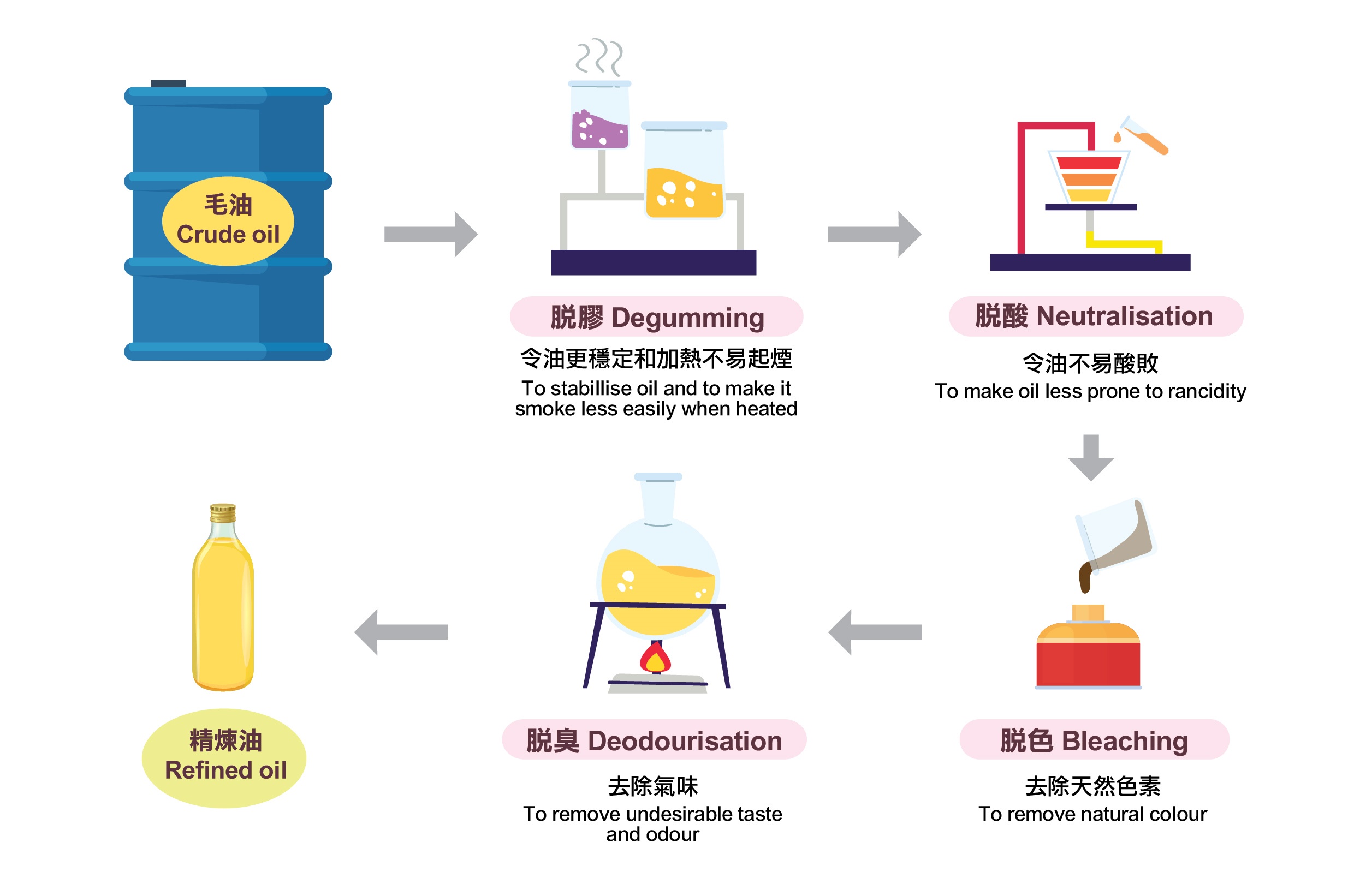
Food Safety Focus (211st Issue, February 2024) – Article 2
Understanding Glycidyl Ester in Food
Reported by Ms. Iris CHEUNG, Scientific Officer,
Risk Assessment Section, Centre for Food Safety
During home cooking and food manufacturing, some unintended chemical by-products known as process contaminants can be formed. As food processing causes chemical changes in food, undesirable substances can be generated, which is often unavoidable. Research also revealed that food may expose consumers to process contaminants. Fried potato products, biscuits, instant noodles and baked goods are some of the examples. Should consumers be concerned? In this article, we will focus on one of the process contaminants, glycidyl ester (GE), which is commonly associated with food and food ingredients that contain refined edible fats and oils.
How is GE Formed?
To ensure food safety and quality criteria are met, fats and oils must go through a series of refinement processes before being utilized as ingredients in food. GE is mainly formed during the deodorisation step of oil refining for the removal of unwanted taste and odour. During this process, oils are heated at 200°C or above, and a series of reactions break down the fats and oils to form a compound known as GE.
 Figure 2: Refining of edible fats and oils
Figure 2: Refining of edible fats and oils
Unsaturated fatty acids in oils could promote the formation of GE in oil and diacylglycerol (DAG) are known to be the precursor. For vegetable oils, climate, soil, growth conditions, and harvesting techniques of the source plants are some of the factors affecting the levels of DAG in the oils, subsequently the levels of GE after refining. The formation of GE from DAG is temperature-dependent. It begins at about 200°C and becomes more significant at above 230°C.
How does GE Get into Our Body?
Refined fats and oils are widely used in food manufacturing, which introduces GE into food products we consume. Researches and studies conducted by overseas authorities and organisations have demonstrated that GE is frequently found in edible fats and oils (e.g. margarine, sesame oil and peanut oil) and foods made from these oils (e.g. biscuits, French fries, potato chips and instant noodles). Although the amount of GE in different foods varies, GE levels are generally higher in palm oil and food products containing palm oil as an ingredient rather than other types of oils and similar products.
After food containing GE is consumed, it will be broken down in the human body and release glycidol. Research animal studies showed that glycidol is gene-damaging. However, there is currently no conclusive evidence that glycidol can have similar effect in humans. Nonetheless, European Union and countries like Australia and the United States have adopted the "As Low and Reasonably Achievable (ALARA)" principle, a precautionary approach to control the potential food safety risks from GE. Although the presence of trace amount of GE in some food is unavoidable, the food industry should implement measures to minimise the levels of GE in food according to the ALARA principle. Likewise, consumers should maintain a balanced diet and eat less fats and oils as far as possible.
What CFS has Done
The Centre for Food Safety (CFS) has taken a number of initiatives to raise the awareness of the public about GE in food and provide the trade with advice to reduce the level of GE in food. Apart from disseminating food safety advices and messages regarding GE to the public through various channels, trade talks and seminars about GE were organised for the industry. Besides, risk assessment studies on edible fats and oils available in the local market were also conducted. The results showed that the average level of GE in local edible fats and oils was lower than that in similar studies conducted overseas.
The trade is advised to make reference to the Code of Practice developed by the Codex and select the techniques that are appropriate to their processes and products in order to prevent and reduce the formation of GE in refined oils and food products made with refined oils. Consumers should maintain a balanced and varied diet to minimise the risk of exposure to contaminants from a limited range of food items. Preparing home food with fresh ingredients can reduce the chance of consuming processed food items that contain the fats and oils concerned. Avoid excessive consumption of food that is rich in fats and oil (e.g. margarine) and food containing refined fats and oil (e.g. deep-fried products) can also reduce the exposure to GE in food.

